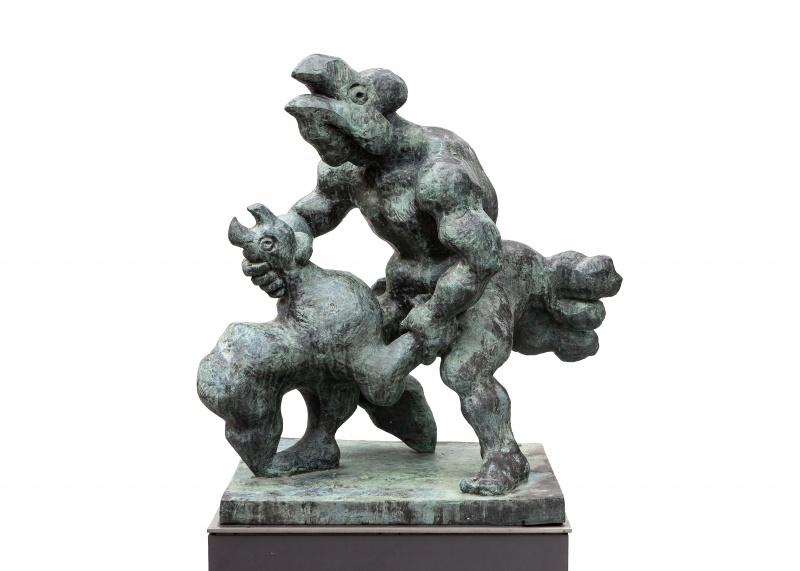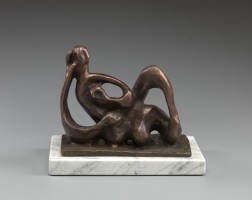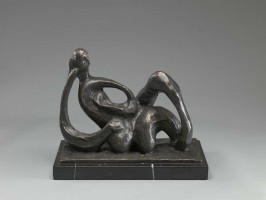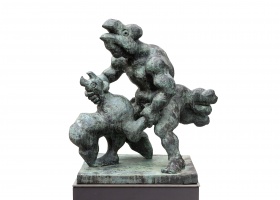


Prometheus Strangling the Vulture
| Author: |
Jacques Lipchitz (1891–1973)  |
| Created: | 1943 |
| Material: | bronze |
| Dimensions: | 95.30 × 84 cm |
Prometheus and tikkun olam. A Greek myth tells us that Zeus, on seeing the imperfection of the first humans, decided to wipe them out and make another better race. He was opposed by his cousin Prometheus, who believed that humans could be improved. Prometheus stole fire from the Olympians and gave it to the people. Enraged, Zeus chained the titan to a cave, and a vulture came to eat his liver every day. Prometheus is considered to be the saviour of the human race. He gave humanity a spark of divine knowledge and performed tikkun olam (Hebrew for ‘repairing the world’). In Judaism, the concept of tikkun olam refers to various forms of action aimed at repairing and improving the world, and states that Jews are responsible not only for their own spiritual, moral and material well-being, but also for that of society as a whole.
Jacques Lipchitz, like Prometheus, was concerned about the fate of humanity. The artist created his first study of Prometheus in 1931, and developed the subject for over 20 years, especially in 1936 and 1937, and between 1943 and 1953. One of his most remarkable bronze sculptures, Prometheus Strangling the Vulture, was created in 1943, and another one, made in 1949, was placed in the courtyard of the Philadelphia Museum of Art. Lipchitz did not attempt to be faithful to the story, and depicted Prometheus as strangling the vulture. According to the artist, this is how tikkun olam occurs: social justice is restored, and good triumphs over evil. ‘My Jewish skin has tingled for my scattered and persecuted blood-brothers. But the monster whom we are killing is not merely antisemitism, it is everything which hinders man from moving forward’ ( J. Lipschitz, 1935, The American Magazine of Art, 28: 458).
Text author Vilma Gradinskaitė
Source: Law firm Valiunas Ellex art album STORIES OF LITVAK ART (2023). Compiler and author Vilma Gradinskaitė, THE ART OF MATERIALS. Compiler and text author Jurgita Ludavičienė









_web.jpg)